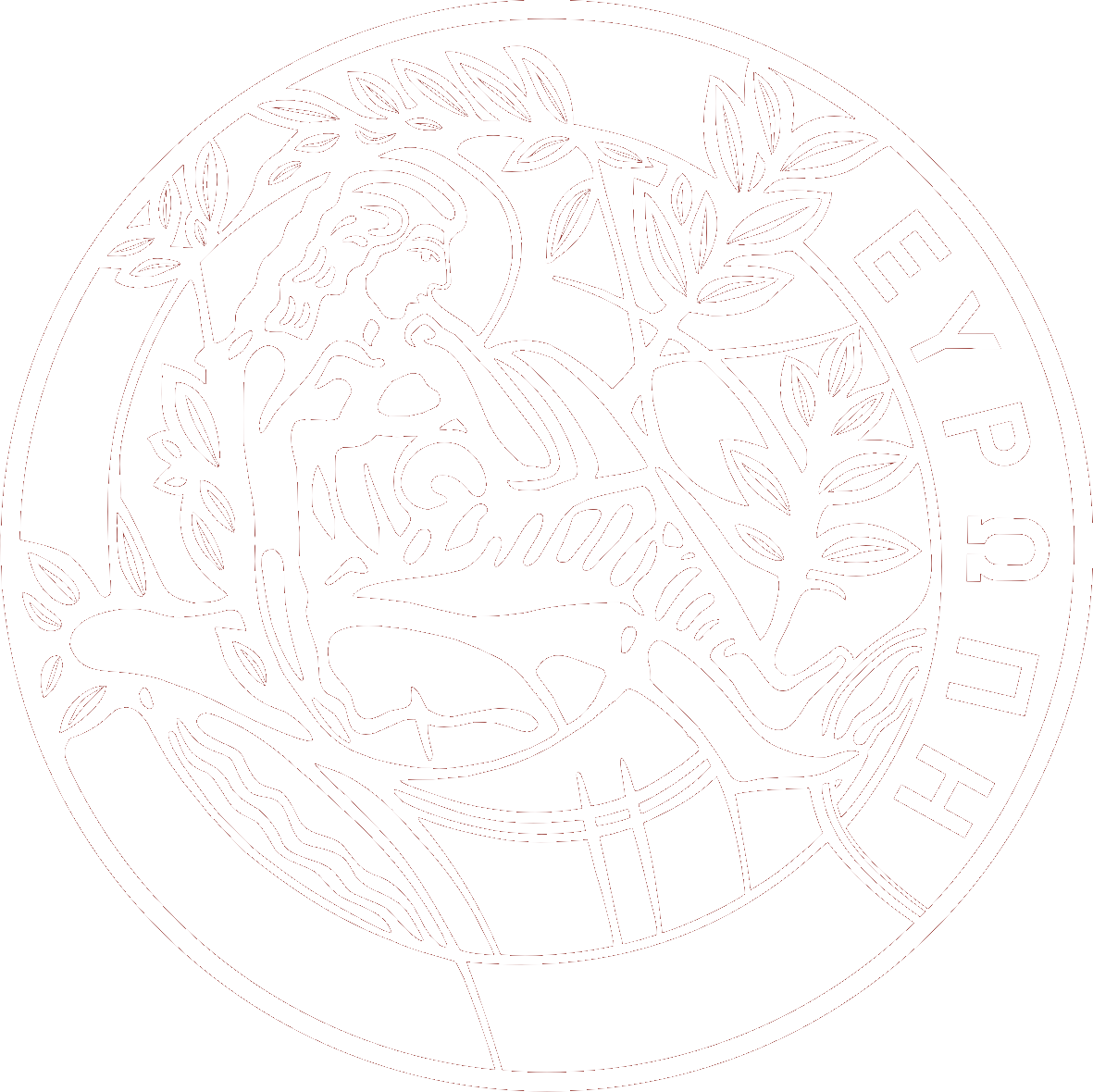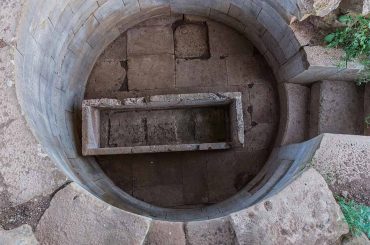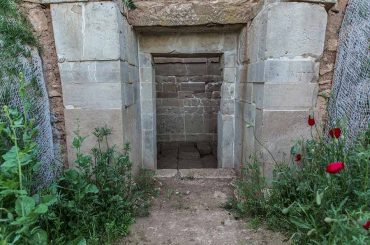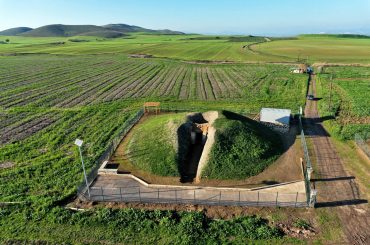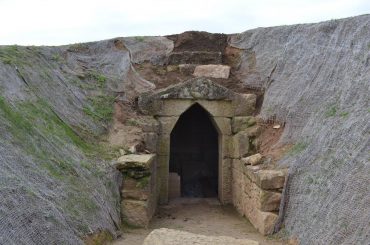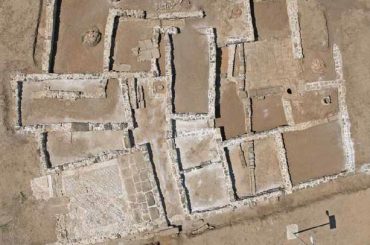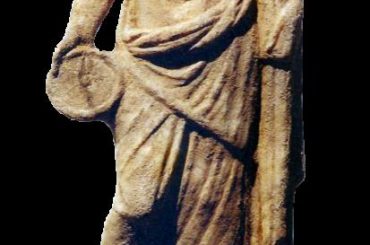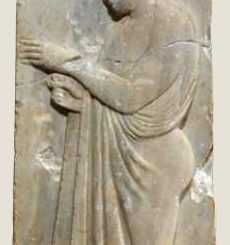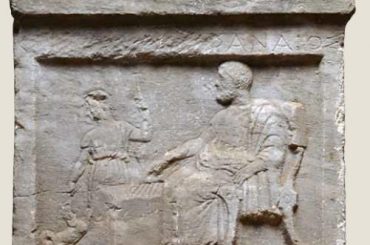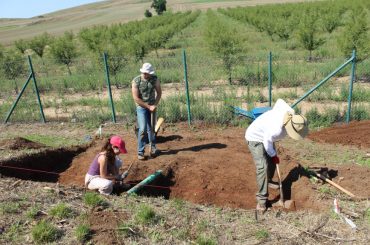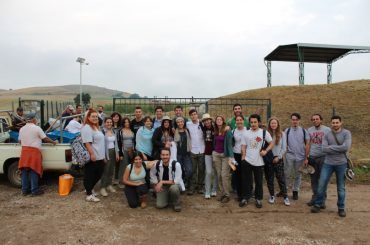Krannon (2018-)
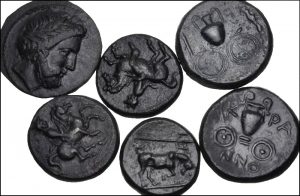
General Information
Krannon was one of the leading cities of ancient Thessaly, belonging to the tetrad of Pelasgiotis. It is located southeast of Pelasgiotis’ capital, on the main road connecting Larissa with Pharsalos. Archaeological finds confirm that the area of Krannon was continuously inhabited from the Neolithic up to the Roman period. The city has been identified by ancient authors as Homeric Ephyra (Il. 13.301), while her later name, «Κραννών», possibly derives from the Aeolic word «κράννα», which means «fountain» and may be associated with a nearby hot spring.
Τhe city reached its pinnacle of prosperity during the 6th and 5th century BC, when it was led by the aristocratic house of the Skopads, one of the three most powerful families of Thessaly during that period. The Skopads shared the cultural values of the southern regions of Greece, favouring artistic competition, and their court attracted notable poets, such as Pindar, Bacchylides, and Simonides.
Since no systematic excavation had previously been conducted at the city, the considerable wealth of Krannon is attested to mostly by the rich findings from its cemeteries and the fact that it minted silver coins immediately after the Persian Wars.
Record of Previous Archaeological Research
The lack of a systematic archaeological excavation in the area resulted in a very limited knowledge regarding the public buildings, the urban structure and the cults of the city. The first excavations were conducted during the early 20th century by A. Arvanitopoulos on the so-called acropolis, where temple ruins were reported.
In 1960, when illicit excavations were rampant, the Ephorate of Antiquities of Larissa opted to actively begin excavating the tumuli to the south of the acropolis. Unfortunately, the tumuli were already looted and only meagre finds were unearthed. Regardless of that fact, the monumentality of their architectural form was impressive. Two pyramidal tombs (A and B) are dated to c.500 BC and the first half of the 4th century BC respectively, while a tholos tomb is dated to the 5th century. The type and quality of construction of the tombs imply a considerable expenditure, showcasing the wealth of the city’s elites during that period. Rescue excavations were also undertaken at separate cemeteries of the city, in 1969, 1981-1984 and, finally, 1989. The most impressive finds came from two Archaic tumuli which contained secondary cremations, approximately 4-5 km away from modern Krannon, near the village of Hagios Georgios. The sumptuous grave offerings, dated c.650 – 550 BC, included, among others, an unprecedented amount, truly extraordinary for Thessalian standards, of weapons and metal objects, suggesting that the dead were either warriors or indulged in displaying themselves as individuals of high status and prestige. Overall, the findings from the tombs in the immediate vicinity of Krannon cover an extensive chronological span, from the Early Iron Age to the Late Hellenistic period. More rescue excavations between 1991-1996 brought to light a Hellenistic villa to the southeast of the acropolis, as well as two ceramic kilns.
Also notable is the archaeological material which was retrieved dispersed in the vicinity of the polis. Funerary and votive stelae / altars, as well as fragments of reliefs and free-standing sculpture, shed light both to the artistic values and the religious beliefs of the Krannonians.
It should be noted that the three monumental tombs, as well as the Hellenistic villa mentioned above, were recently restored and are now open to the public.
The University of Crete Excavation
In June, 2018, the University of Crete, in collaboration with the Ephorate of Antiquities of Larissa, under the direction of Dimitrios Bosnakis, Associate Professor in Classical Archaeology, and Styliani Katakouta, archaeologist of the Ephorate of Antiquities of Larissa, launched a new archaeological expedition in the area. This endeavour was greatly facilitated thanks to the constant, valuable support of the local municipality of Kileler.
Goals
The main goal of the project is to understand the polis’ urban plan within the context of the general model of urban development in Thessaly from the Early Iron Age to the Late Hellenistic period. Initially, the excavation focused on the aforementioned tumuli, as well as the rich Archaic cemetery of the Nanoulis plot, and later predominantly on the acropolis. These two campaigns led to positive results, since new cremations and, also, some important remains in the residential area on the acropolis were uncovered. Apart from the excavation, a preliminary field survey took place, during which abundant pottery sherds from the Bronze Age till the Late Hellenistic Period, as well as a plethora of dispersed architectural members (e.g. an Archaic capital of the Doric order) were collected. Furthermore, geophysical exploration, in conjunction with images from Google Earth and data from the Hellenic Cadastre, has already provided important evidence concerning the fortification and the possibly Hippodamian plan of the city.
Bibliography
- Hansen, M.-H. – Nielsen, T.H., An Inventory of Archaic and Classical Poleis (Oxford 2004), 694-695.
- Ζαούρη, A. – Κατακούτα, Στ., «Κλίβανοι από κεραμικό εργαστήρι στην αρχαία Κραννώνα», Θεσσαλική Κεραμική. Χώμα και Νερό. Από την προϊστορία στην Τρίτη χιλιετία. Μνήμη Γεωργίου Γουργιώτη. Νομαρχιακή Αυτοδιοίκηση Λάρισας- Λαογραφικό μουσείο Λάρισας, (Αθήνα 2006), 50-65.
- Κατακούτα, Σ., «Κεραμική αρχαϊκών χρόνων από ταφικά σύνολα της Κραννώνας», στο Σ. Κατακούτα – Δ. Παλαιοθόδωρος (επιμ.), Τοπική Κεραμική της Θεσσαλίας (από τον 7ο στον 5ο αι. π.Χ.). Πρακτικά Ημερίδας, Λάρισα, 24 Νοεμβρίου 2017 (Λάρισα 2019), 63-78.
- Moustaka, A., Kulte und Mythen auf thessalischen Münzen (Wurzburg 1983).
- Μποσνάκης, Δ., Ενθετταλίζεσθαι τεχνοτροπία και ιδεολογία των Θεσσαλικών επιτύμβιων αναγλύφων του 5ου και του 4ου αι. π.Χ. (Βόλος 2013).
- Νικολάου, Ε. – Κραβαρίτου, Σ., (επιμ.), Αρχαίες πόλεις Θεσσαλίας και περίοικων περιοχών (Λάρισα 2012), 111-115
- Stamatopoulou, M., “Thessalian Aristocracy and Society in the Age of Epinikian”, στο Hornblower – C. Morgan (επιμ.), Pindar’s Poetry, Patrons and Festivals (Oxford 2007), 309-341.
- Stamatopoulou, M., “Forging a link with the past. The evidence of the Thessalian cemeteries in the Archaic and Classical periods”. Στο Olivier, H. & Kelp, U. (επιμ.), Tumulus as a sema: space, politics, culture and religion in the first millenium bc (Berlin 2016), 181-204.
